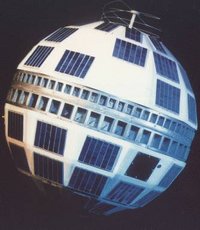Without satellites, the Olympics wouldn’t be what they are …

London 2012 Olympic Games Stadium
Only a lucky few million people will actually attend the London 2012 Olympic Games, whereas billions of people all over the world will feel part of the event as a result of the immediacy of live television.
The following 4 minute video produced by the European Space Agency, a leading light in the development of satellite communications, gives an overview of how this is achieved:
In the coming days the Olympic Games will attract a worldwide audience and from wherever we are on the globe we’ll all be able to follow the events in London. This is a fantastic showcase for space technologies which are often unknown and taken for granted.
The evolution of space activity, and in particular, satellite telecommunications, has transformed the planet into a big stadium where everybody has a front seat. This video recalls the extraordinary progresses made in the relay of sports and the new tools now available for professionals and spectators around the world.
More background information can be found on: http://www.esa.int/esaTE/index.html



